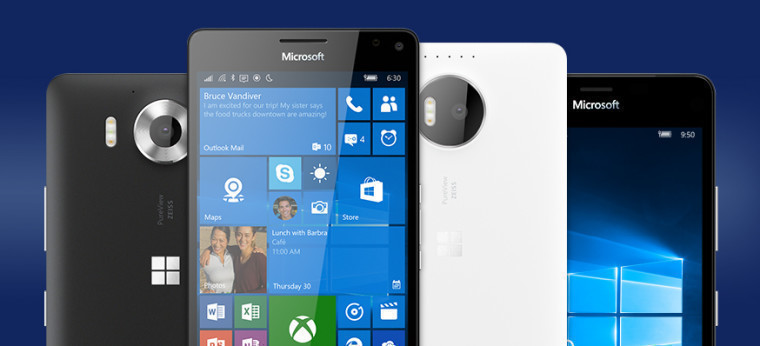
How many phones did Microsoft sell last quarter? For a second consecutive quarter, Microsoft hasn't published the answer to that question as part of its latest earnings report. But with the information that it has provided, we can at least get some idea of where its phone hardware business now stands.
On its 10-Q form submission to the SEC - published today alongside its Q2 FY2017 results - Microsoft said that during the last quarter "phone revenue decreased $878 million or 81% [year-over-year] driven by a reduction in volume of phones sold".
As part of its earnings report for Q2 FY2015, Microsoft said that phone hardware revenue for that quarter was $2.284 billion. But when it published its quarterly results for Q2 FY2016 a year later, Microsoft said in its 10-Q submission to the SEC that phone revenue had "decreased $1.2 billion or 53%" year-over-year, pushing it down to somewhere in the region of $1.08 billion.
With its latest year-over-year decline of $878 million, that means that Microsoft's phone revenue last quarter was roughly $200 million - quite a significant drop compared with two years ago. It also indicates that its phone hardware revenues fell by a third compared with the previous quarter (Q1 FY2017 / Q3 CY2016), when they stood at around $300 million.
It is worth noting that Microsoft's phone revenue last quarter will have been impacted slightly by the sale of its feature phone business to Foxconn, which it said was completed in November.

Of course, this should come as no great shock. As in previous financial filings over the last couple of years, Microsoft noted today: "As anticipated, our change in phone strategy resulted in a reduction in units sold and associated expenses in fiscal year 2016, and this trend is expected to continue in fiscal year 2017."
That phone strategy involved, in Microsoft's words, creating...
a vibrant Windows ecosystem with a single set of experiences across our first-party device family and original equipment manufacturer (“OEM”) offerings. Part of this strategy involves focusing our phone devices on a narrower range of customer categories and differentiating through the combination of hardware and software we are uniquely positioned to offer.
But the range of handsets that it offered as part of that strategy were something of a mixed bag. Its Lumia 950 and 950 XL flagships were supposedly 'designed for the fans', despite offering few of the features that fans had asked for. The Lumia 650 was an excellent device, but poorly differentiated as a 'business' device - aside from a smart metal body, it offered no unique features for business users that weren't available on other Windows phones. The entry-level Lumia 550, meanwhile, was just plain awful.
Microsoft also did little to actively promote the only four Windows 10 Mobile devices that it launched, and even removed references to Windows phones from its Store homepage in August, burying the link to its handsets in a drop down menu instead. With such an odd mix of products, and so little promotion, it's not surprising that its phone revenue has fallen by 92% in the last two years.
All four of Microsoft's newest phones are now 12-15 months old, and are now sold out - or close to doing so - in many parts of the world, and the company has offered no hints of any plans to replace them. With little inventory remaining, its phone hardware revenue will decline further during the rest of this quarter, as Microsoft acknowledged during its earnings call today. Windows' share of the global smartphone market - which was just 0.4% last year, according to IDC - will also continue to fall.
With its next-gen Surface phone potentially a year away, Microsoft also runs the risk of losing mindshare among potential device buyers - including both consumers and businesses - in a mobile market dominated by increasingly capable Android devices and iPhones.
















28 Comments - Add comment